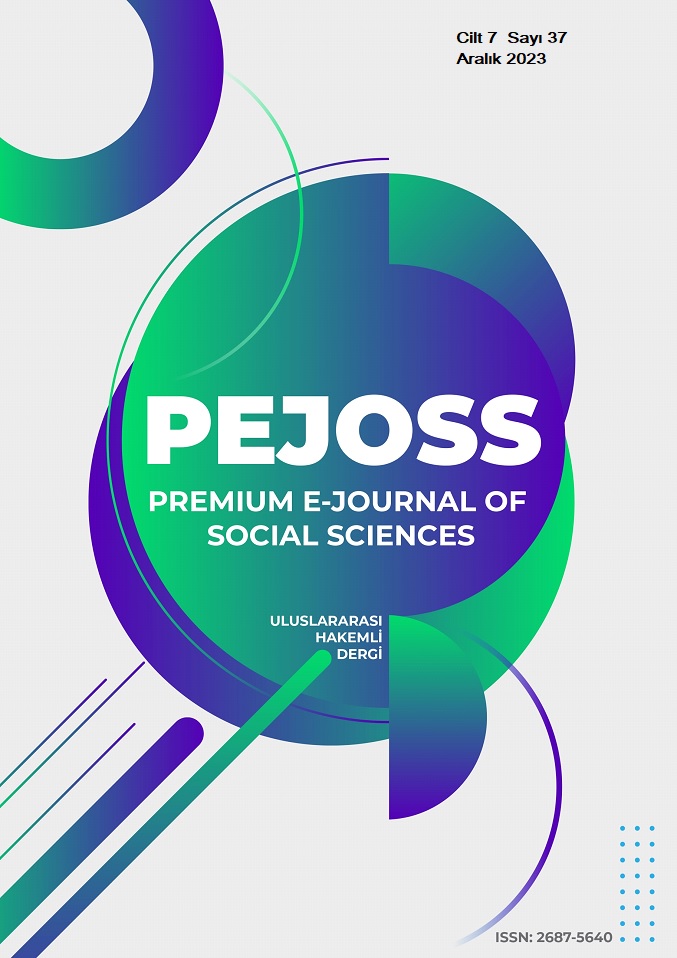Examining the Effect Level of Computer Aided Instruction on Education
DOI:
https://doi.org/10.5281/zenodo.10450923Keywords:
Education, training, contribution, support, computer-assisted educationAbstract
In our age, new education and training needs have emerged as a result of scientific and technological developments, and in parallel with this, new opportunities are being put forward for the realization of educational practices. The most important of these opportunities is undoubtedly the computer. Computers have begun to be used in many areas of social life and have even become an essential part of daily life. As a result, titles such as "Computer Education", "Computer Aided Education" and "Computer Education" have emerged. This research, computer-assisted education is emphasized, the benefits of computerized education and training, the gains it provides to the student and the convenience it provides to the educator. Computer-assisted teaching is a form of teaching in which students interact with programmed learning materials using computers, in other words, they learn through computer programs, and can monitor their learning and evaluate themselves. In this research, it is aimed to learn how computer-assisted teaching is perceived by teachers and to reveal teachers' thoughts about computer-assisted teaching. A total of 40 teachers working in Diyarbakır province participated in the research. As a result of the research conducted with the descriptive scanning model, it was concluded that computer-assisted teaching has more benefits
Downloads
References
Atilgan, A. R., Durell, S. R., Jernigan, R. L., Demirel, M. C., Keskin, O., & Bahar, I. (2001). Anisotropy of fluctuation dynamics of proteins with an elastic network model. Biophysical journal, 80(1), 505-515.
Bircan, M. A., & Zabun, E. (2021). Sınıf öğretmeni adaylarının bilgisayar ve internet kullanımı özyeterlilik algıları ile çevrimiçi öğrenmeye hazırbulunuşluluk düzeyleri. Üniversite Araştırmaları Dergisi, 4(3), 292-298.
Dönmez, A. (2023). Eğitimde Bilgisayar Destekli Öğretim Uygulamaları. BİDGE Yayınları.
Gorur, A., Karpuz, C., & Alkan, M. (1998). Characteristics of periodically loaded CPW structures. IEEE Microwave and guided wave letters, 8(8), 278-280.
Keser, H. (1988). Bilgisayar Destekli Eğitim İçin Bir Model Önerisi (Yayınlanmamış Doktora Tezi). Ankara: Ank. Üniv. Sosyal Bil. Enstitüsü.
Köksal, A. (1981). Bilişim terimleri sözlüğü. TDK Yayınları.
Özgedik, A., & Keskin, N. (2023). Teknoloji Ve Tasarım Öğretmenlerinin Bilgisayar Destekli Eğitime Yönelik Tutumlarının İncelenmesi. Journal of International Social Research, 16(98), 213-227.
Taşçı, D. (1993). Bilgisayar destekli eğitim projesi ve öğretmen yetiştirme problemi. Kurgu Anadolu Üniversitesi İletişim Bilimleri Fakültesi Uluslararası Hakemli İletişim Dergisi, 12(12), 199-206.
Yildirim, Ş. (1999). Neural network for control of bipeds. Electronics Letters, 35(23), 943-948.
Zaman, F., Pehlivanoğulları, Ş., Yerlikaya, M., Hamdusena, T. E. L., & Yakut, E. (2022). Okullarda Kullanılan Eğitim Öğretim Teknolojileri Ve Bilgisayar Destekli Eğitimin İncelenmesi. International Journal Of Socıal Humanıtıes Scıences Research, 9(80), 194-201.
Downloads
Published
How to Cite
Issue
Section
License
Copyright (c) 2023 Premium e-Journal of Social Science (PEJOSS)

This work is licensed under a Creative Commons Attribution 4.0 International License.


